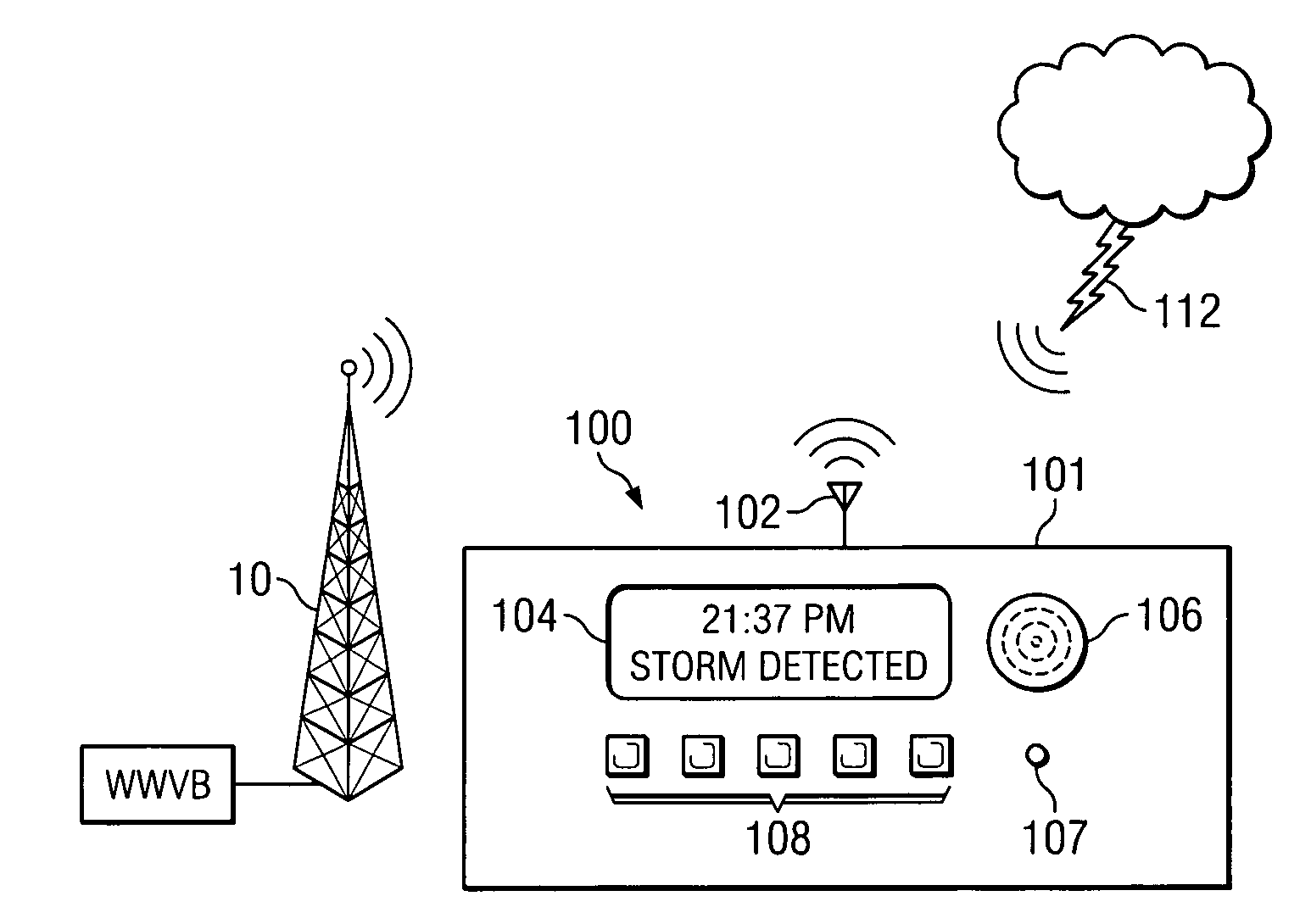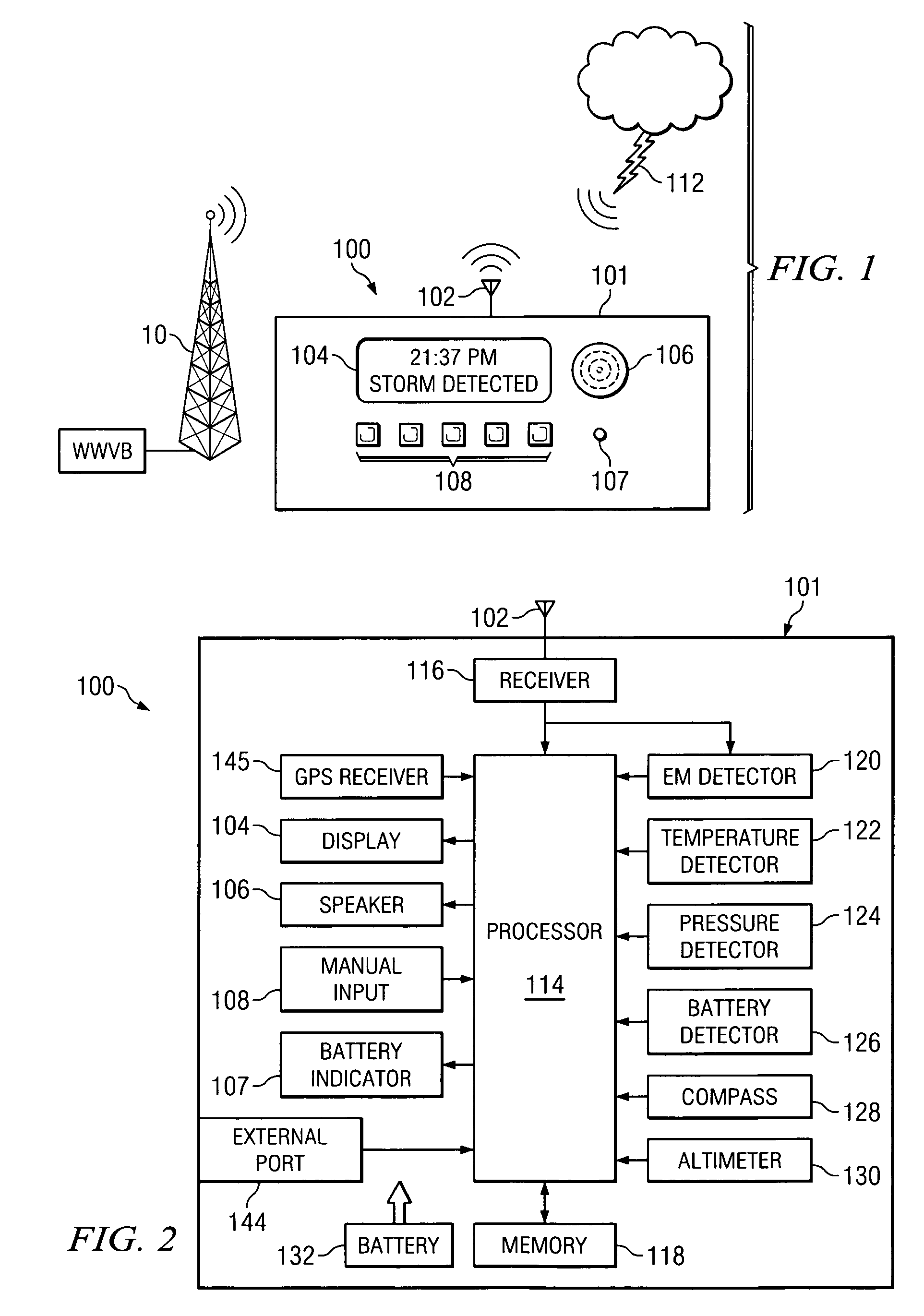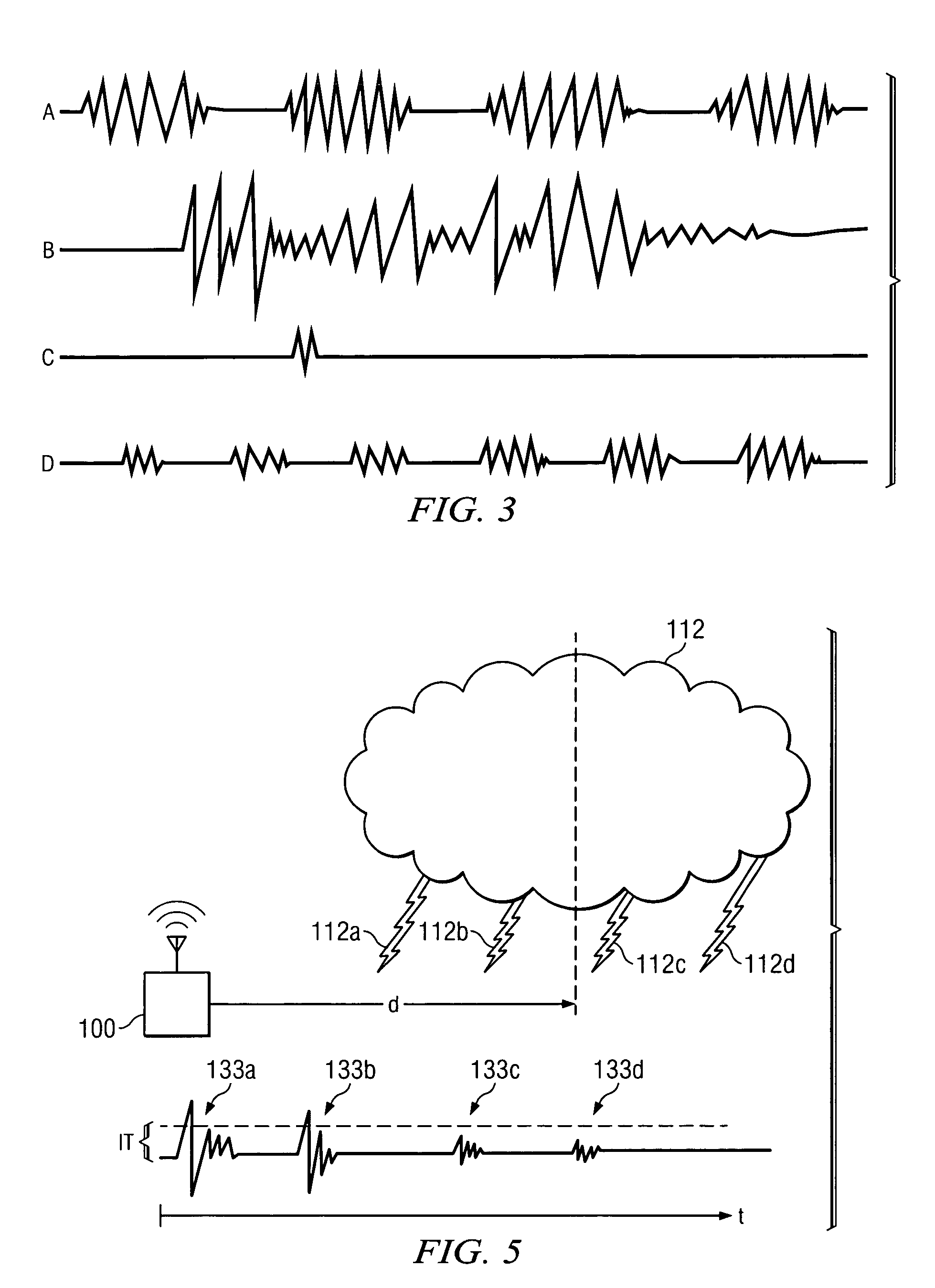Portable weather detector and alert system
a weather detector and alert system technology, applied in the field of atmospheric phenomenon detection system, can solve the problems of system not providing any information respecting, life and safety danger, and gross distance error
- Summary
- Abstract
- Description
- Claims
- Application Information
AI Technical Summary
Benefits of technology
Problems solved by technology
Method used
Image
Examples
Embodiment Construction
[0030]Referring now to the drawings, wherein like reference numbers are used to designate like elements throughout the various views, several embodiments of the present invention are further described. The figures are not necessarily drawn to scale, and in some instances the drawings have been exaggerated or simplified for illustrative purposes only. One of ordinary skill in the art will appreciate the many possible applications and variations of the present invention based on the following examples of possible embodiments of the present invention.
[0031]With reference to FIG. 1, a portable weather detector and alert system in accordance with one embodiment is shown. A portable alert device 100 may include a suitable portable alert device housing 101, typically made of plastic. In accordance with the disclosed embodiment, the portable alert device housing 101 may be about the size of a standard pager, about two inches by three inches by one half inch. Like a pager, the portable alert...
PUM
 Login to View More
Login to View More Abstract
Description
Claims
Application Information
 Login to View More
Login to View More - R&D
- Intellectual Property
- Life Sciences
- Materials
- Tech Scout
- Unparalleled Data Quality
- Higher Quality Content
- 60% Fewer Hallucinations
Browse by: Latest US Patents, China's latest patents, Technical Efficacy Thesaurus, Application Domain, Technology Topic, Popular Technical Reports.
© 2025 PatSnap. All rights reserved.Legal|Privacy policy|Modern Slavery Act Transparency Statement|Sitemap|About US| Contact US: help@patsnap.com



